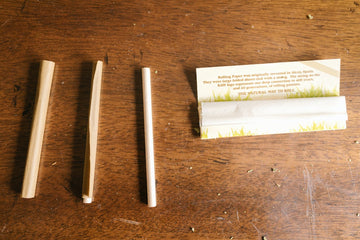News
Do Cones Burn Slower Than Papers? Let’s Compare!
The debate between smokers as to whether cones burn slower than papers is one that has been going on for generations. It’s a hot topic of conversation for those who are passionate about their smoking experience, and it’s an important one to consider if you are looking to maximize the amount of time you can spend enjoying your smoke. So, let’s take a look at cones vs. papers and determine which one burns slower.
In order to answer this question, we first need to understand the differences between cones and papers. Cones are pre-rolled paper tubes that come in a variety of sizes and materials. They are typically made of hemp, rice, or a combination of the two, and they usually have a wider circumference than rolling papers. This allows more material to be packed into the cone, making it burn slower than the paper variety.
Rolling papers, on the other hand, are thin sheets of paper that are used to roll cigarettes and joints. They come in a variety of sizes, thicknesses, and materials, and they typically have a smaller circumference than cones. This means that less material can be packed into the paper, making it burn faster than the cone variety.
So, which one burns slower? To answer this question, we need to look at the factors that affect how quickly a cigarette or joint burns. The two main factors are the type of material used and the thickness of the paper. Generally speaking, thicker papers and cones made of hemp or rice will burn slower than thinner papers and cones made of other materials.
Another factor to consider is the amount of material that is packed into the paper or cone. This can have a big impact on the burn rate, as a tightly packed paper or cone will take longer to burn than a loosely packed one. The final factor to consider is the size of the paper or cone. Generally speaking, larger papers and cones will burn slower than smaller ones.
So, to answer the question of whether cones burn slower than papers, the answer is yes. Cones are typically made of thicker materials, contain more material, and are larger than rolling papers. All of these factors contribute to a slower burn rate, making cones the better option for those looking to maximize their smoking experience.
Of course, it’s important to remember that the burn rate of a paper or cone can be affected by other factors as well, such as the air temperature, humidity, and how tightly it is packed. When in doubt, it’s always best to experiment with different types and sizes of papers and cones to determine which one works best for you.
Ultimately, the debate between cones and papers is one that has been going on for generations, and it’s one that is likely to continue. While there is no definitive answer as to which one burns slower, it is clear that cones offer a slower burn rate than rolling papers. So, if you’re looking to maximize your smoking experience, cones are certainly the way to go.
In order to answer this question, we first need to understand the differences between cones and papers. Cones are pre-rolled paper tubes that come in a variety of sizes and materials. They are typically made of hemp, rice, or a combination of the two, and they usually have a wider circumference than rolling papers. This allows more material to be packed into the cone, making it burn slower than the paper variety.
Rolling papers, on the other hand, are thin sheets of paper that are used to roll cigarettes and joints. They come in a variety of sizes, thicknesses, and materials, and they typically have a smaller circumference than cones. This means that less material can be packed into the paper, making it burn faster than the cone variety.
So, which one burns slower? To answer this question, we need to look at the factors that affect how quickly a cigarette or joint burns. The two main factors are the type of material used and the thickness of the paper. Generally speaking, thicker papers and cones made of hemp or rice will burn slower than thinner papers and cones made of other materials.
Another factor to consider is the amount of material that is packed into the paper or cone. This can have a big impact on the burn rate, as a tightly packed paper or cone will take longer to burn than a loosely packed one. The final factor to consider is the size of the paper or cone. Generally speaking, larger papers and cones will burn slower than smaller ones.
So, to answer the question of whether cones burn slower than papers, the answer is yes. Cones are typically made of thicker materials, contain more material, and are larger than rolling papers. All of these factors contribute to a slower burn rate, making cones the better option for those looking to maximize their smoking experience.
Of course, it’s important to remember that the burn rate of a paper or cone can be affected by other factors as well, such as the air temperature, humidity, and how tightly it is packed. When in doubt, it’s always best to experiment with different types and sizes of papers and cones to determine which one works best for you.
Ultimately, the debate between cones and papers is one that has been going on for generations, and it’s one that is likely to continue. While there is no definitive answer as to which one burns slower, it is clear that cones offer a slower burn rate than rolling papers. So, if you’re looking to maximize your smoking experience, cones are certainly the way to go.




















